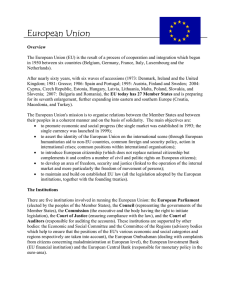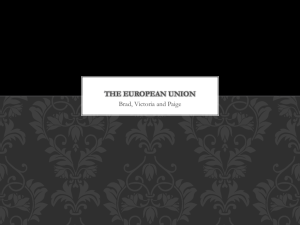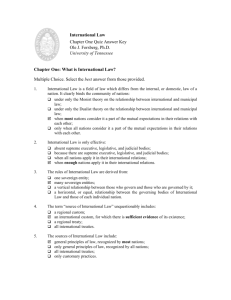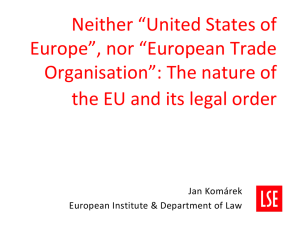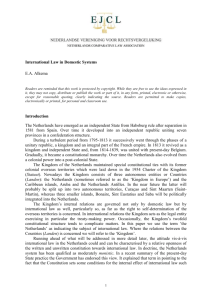European Unity Timeline
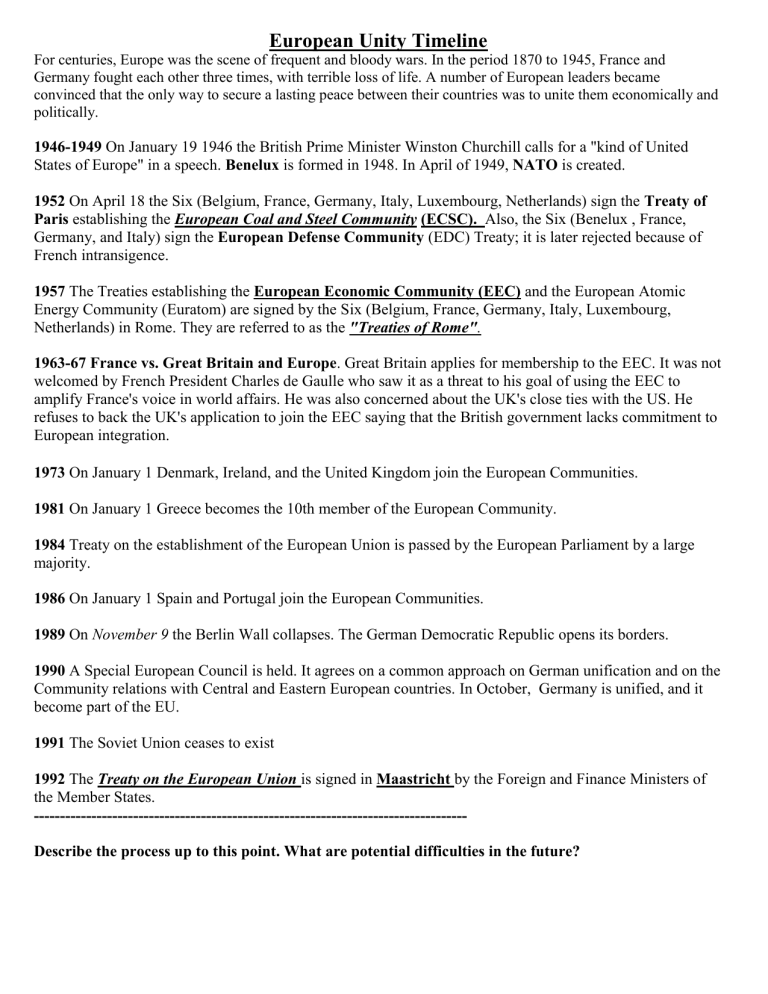
European Unity Timeline
For centuries, Europe was the scene of frequent and bloody wars. In the period 1870 to 1945, France and
Germany fought each other three times, with terrible loss of life. A number of European leaders became convinced that the only way to secure a lasting peace between their countries was to unite them economically and politically.
1946-1949 On January 19 1946 the British Prime Minister Winston Churchill calls for a "kind of United
States of Europe" in a speech. Benelux is formed in 1948. In April of 1949, NATO is created.
1952 On April 18 the Six (Belgium, France, Germany, Italy, Luxembourg, Netherlands) sign the Treaty of
Paris establishing the European Coal and Steel Community (ECSC). Also, the Six (Benelux , France,
Germany, and Italy) sign the European Defense Community (EDC) Treaty; it is later rejected because of
French intransigence.
1957 The Treaties establishing the European Economic Community (EEC) and the European Atomic
Energy Community (Euratom) are signed by the Six (Belgium, France, Germany, Italy, Luxembourg,
Netherlands) in Rome. They are referred to as the "Treaties of Rome".
1963-67 France vs. Great Britain and Europe . Great Britain applies for membership to the EEC. It was not welcomed by French President Charles de Gaulle who saw it as a threat to his goal of using the EEC to amplify France's voice in world affairs. He was also concerned about the UK's close ties with the US. He refuses to back the UK's application to join the EEC saying that the British government lacks commitment to
European integration.
1973 On January 1 Denmark, Ireland, and the United Kingdom join the European Communities.
1981 On January 1 Greece becomes the 10th member of the European Community.
1984 Treaty on the establishment of the European Union is passed by the European Parliament by a large majority.
1986 On January 1 Spain and Portugal join the European Communities.
1989 On November 9 the Berlin Wall collapses. The German Democratic Republic opens its borders.
1990 A Special European Council is held. It agrees on a common approach on German unification and on the
Community relations with Central and Eastern European countries. In October, Germany is unified, and it become part of the EU.
1991 The Soviet Union ceases to exist
1992 The Treaty on the European Union is signed in Maastricht by the Foreign and Finance Ministers of the Member States.
-----------------------------------------------------------------------------------
Describe the process up to this point. What are potential difficulties in the future?
1995 On January 1, Austria , Finland and Sweden join the Union, bringing membership up to 15.
On March 26 the Schengen Agreement comes into force between Belgium, France, Germany, Luxembourg, the Netherlands, Portugal and Spain. EU citizens can now leave their passports at home as there is no border control.
The UK and Ireland stay out of the agreement due to fears of terrorism and illegal immigration.
Most of the members of the former Soviet Union have, by this time, applied for admittance.
1997 June 1 establishment of the European Central Bank .
1999 On January 1 the Euro is officially launched. Austria, Belgium, Finland, France, Germany, Ireland,
Italy, Luxembourg, The Netherlands, Portugal, and Spain adopt the euro as their official currency.
The EU faces its darkest hour as revelations of fraud, nepotism, and mismanagement undermine the commission. All 20 commissioners resign. A new president of the commission promises radical changes in the way it is run. Only a handful of the old commissioners are reappointed.
2000 On September 28 Denmark holds a referendum on the euro. The majority rejects joining the single
European currency.
2001 On February 26 a new Treaty amending the Treaty on European Union and the Treaties establishing the
European Communities, is signed. The Treaty of Nice changes membership rules to allow for eastward expansion.
2002 On January 1 the Euro coins and notes enter into circulation in the twelve participating Member States:
Austria, Belgium, Finland, France, Germany, Greece, Ireland, Italy, Luxembourg, the Netherlands, Portugal and Spain.
A convention has spent much of 2002 and 2003 drafting the EUs first constitution : Constitution for Europe
It’s goals are to simplify the EU treaties to make the EU more easily understood by its citizens and to help it work efficiently after enlargement.
2004 On May 1 European Union's biggest enlargement ever in terms of scope and diversity becomes a reality with 10 new countries - Cyprus, the Czech Republic, Estonia, Hungary, Latvia, Lithuania, Malta, Poland, the
Slovak Republic, and Slovenia - representing all together more than 100 million citizens, joining the
European Union.
2005 May 29 French voters vote no to ratification of the European Constitutional Treaty.
June- Voters in the Netherlands reject on a referendum the ratification of the European Constitutional Treaty.
As the constitution cannot come into effect unless it is ratified by all 25 member states, many commentators declare it dead. The European Union continues to function on the basis of existing treaties but its future direction has been thrown dramatically into question.
Much of the opposition is due to domestic issues; voters reject the constitution as a rejection of the politicians supporting the constitution.
2006 Talks with Turkey stall out
2007 Bulgaria and Romania joined the EU
Ireland rejects the Lisbon Treaty which centralizes much of the authority of the EU and takes power away from the member states. Ireland later accepts the treaty after several concessions and it is ratified in 2009.

